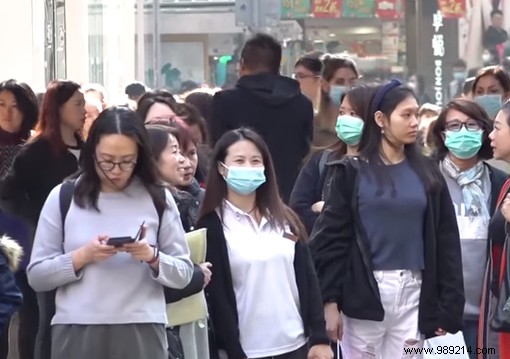What if very few patients were responsible for most infections? Indeed, Covid-19 spreads mainly with clusters, these groups of cases having a common origin. Researchers therefore evoke a superpropagation linked to individual variations. Nevertheless, enclosed spaces would also have played an important role.
An article published by Science magazine May 19, 2020 brings new data on the spread of Covid-19. Indeed, we are talking about "superspreaders". It can be either individuals whose characteristics are still poorly defined, or a combination between a sick person and a favorable environment to the spread of the virus (e.g. confined spaces).
Let's first mention the reproduction index R0 , relating to the number of people an infected individual can infect. If this value is below 1, the number of patients is lower than the number of infected people. In the case of Covid-19, this same R0 index was between 2 and 3 , in other words each infected person could contaminate between two and three healthy people.
However, another parameter is added to the first:the dispersion factor "k". This determines whether the reproduction index R0 is homogeneous between the patients. However, if the latter differs significantly according to the patients, it becomes a question of a large dispersion of the contaminated (secondary cases).
Thus, a k index less than 1 is synonymous with the existence of superspreaders within the population. Indeed, the lower this value, the lower the number of people responsible for contamination. In 2005, researchers calculated the k-index for the 2003 SARS epidemic:0.16. In other words, the superspreaders had played an immense role in the spread of this coronavirus.

The publication of Science indicates that it will be necessary to wait a little longer before being certain of the existence of superspreaders with regard to SARS-CoV-2 (Covid-19). Indeed, this kind of information is usually the subject of certainty retrospectively, and this after epidemiological tracing . Thus, if it is a question of carrying out analyses, researchers have already communicated initial estimates. Swiss work published at the end of January 2020 estimated that the Covid-19 epidemic was less subject to superspreaders as the SARS or MERS epidemics (2012).
Epidemiologist Gabriel Leung of the University of Hong Kong supports this assertion. The person concerned indeed notes differences with SARS-CoV-2. However, the latter reminds us that we have still identified many clusters , in other words each time a few people responsible for a large number of contaminations.
Finally, if the coronavirus-specific factors (e.g. mutations) and its hosts (e.g. asymptomatic people) are very important, the behavior of people as well as the environment play a very important role. Regarding this last notion, it can be a question of population density or even of the proximity between people. In fact, confined spaces are specifically singled out.
A Chinese publication (PDF in English / 22 pages) released in early April 2020 showed that out of 318 clusters , only one appeared outside. The others would all have originated in enclosed spaces. Above all, this study had concluded that there was a 19 times greater risk for this type of space!